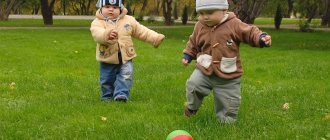05/21/20215 minutes read 1038
More recently, society equated the development of a person and his personality with the degree of education, level of income, and life. It was believed that the more wealth, the higher the development. Now this can be disputed, since there is absolutely no connection between personal development and material wealth. The level of personal development is determined through understanding one’s being, purpose, awareness of oneself and one’s life, the formation of consciousness and self-awareness.
Each person comes into this world as a “clean slate” and throughout his life he learns, develops and improves. Development occurs in society and is greatly influenced by socialization. Personality develops only through interaction and contact with other people.
Alone with oneself, without exchanging information, impressions, emotions and feelings, the development process is simply impossible. Outside of society, a person lives in the environment of the “animal world” and there is simply no need to improve his consciousness, personality, spiritual qualities, or develop his talents, it is not interesting, such a need and desire does not arise.
Infancy
This period is distinguished by Erikson and Freud (“Oral stage”). At this stage, the foundations of personality and attitude towards the world around us are laid - trust or distrust, confidence or lack thereof.
Of course, an important role in a child’s life is played by his mother, who represents the whole world for the baby. He needs maternal care, which allows him to feel consistency and recognition in his experiences. Further development of personality largely depends on the first days of life.
If there is trust, the child perceives the world in a positive way, as reliable, predictable, and calmly endures difficulties, even the temporary absence of the mother nearby. In the absence of adequate maternal care, feelings of mistrust, fear and suspicion arise. Thus, the basis of the first period is the relationship: “trust-distrust”.
The second stage of personality development
This is the stage of the social addict - the “adapted” average person in the street, for whom 90% of all television programs, magazines, games and media news are intended. Here I am omitting books because most of them have a slightly higher level of information presentation.
At this stage, the person intuitively feels that physical violence must be avoided. He can provide his rationale for understanding why one should not behave immorally on a physical level
However, the logical explanation is not so important. What is important is the deep experience in his unconscious
If you believe in rebirth, then you can call it the experience of past lives, where a person worked out gross karma. Otherwise, we can talk about genes passed on by worthy parents or proper upbringing. The average person descends to physical violence during regression, when his perception is temporarily dulled.
However, the physical plane is not the only one. And at the second stage of development, a person can be immoral as far as his feelings and thoughts are concerned.
At the second stage of development, for example, a person rarely understands that lying is also violence and disharmony. In other words, here the problem is transferred to a more subtle – mental level. Development as such is concerned with eliminating gross misunderstandings and shifting attention to more subtle imbalances.
At the second stage of development, the survival instinct fades into the background, its influence becomes indirect, but gluttony and lust still remain central needs. The difference with the first stage of development is that consciousness becomes an order of magnitude subtler and needs reveal their shades and qualities. A person begins to play temptation and seduction in order to enjoy what is happening in a more sophisticated way. In sex, foreplay and caresses appear. In addition to meat and booze, there may be an interest in more refined dishes.
A characteristic feature of the second stage of development is the need for pleasure. And since the mental sphere is already developed to some extent, a person, in addition to sex and food, is interested in the pleasures of his mind. This includes: games, entertaining reading, movies, chatter and all kinds of fun.
According to the criterion of wisdom and foresight, a person at the second stage of development made a noticeable step. Now he operates with memory, and is ready to earn money, which he can spend on getting what he wants. At this stage, a person is prone to drug addiction and alcoholism, so it is not for nothing that the social block of information that condemns these tendencies works so actively.
Another criterion of the first two stages of development is degradation in the absence of labor and active activity. If a person in the first two stages suffers from a condition, most likely he will soon die. An exception can only be in the case of strict control by a stronger personality located next to the person of the first two stages of development. In this case, the strong personality protects the weaker from indulging his passions. After all, as you know, drug addiction tends to progress - be it addiction to games, TV, sex, alcohol, or drugs. Fortunately, a second-level person is only in rare cases able to earn huge money on his own. Usually he seems to maneuver between vices and his ability to satisfy them.
Diagnosis of intellectual abilities
A person's level of intellectual development presupposes his ability to use his mind for thinking, understanding, listening, making decisions, observing, perceiving relationships and other mental operations. One of the most widely used methods for determining the degree of development of this quality is IQ tests, in which a certain set of tasks is proposed, and a fixed amount of time is allocated for their completion. The scale of points that can be scored when passing this test ranges from 0 to 160 and represents the range from retardation to genius. IQ tests are intended for people of any age.
Another popular technique - SHTURE - also reveals abilities. The level of development of intellectual abilities in schoolchildren is the goal of diagnosing this method. Includes 6 subtests, each of which contains from 15 to 25 tasks of the same type. The first two subtests are aimed at identifying the general awareness of schoolchildren, and the rest reveal:
- ability to find analogies;
- logical classifications;
- logical generalizations;
— finding the rule for constructing a number series.
The method is intended for group research and is limited in time. High statistical indicators of the SHTUR technique allow one to judge the reliability of the results being revealed.
Driving forces of personality development
Any improvement involves leaving your comfort zone. Accordingly, the conditions for personal development also “push” a person out of his usual environment, forcing him to think differently. The main mechanisms of personal growth include:
- Isolation – acceptance of one’s individuality;
- Identification – self-identification of a person, search for analogues;
- Self-esteem is the choice of one’s “ecological niche” in society.
It is these mechanisms of personality development that force you to reconsider your attitude towards life, leave your comfort zone, and improve spiritually.
After the question of self-esteem and satisfaction of his “ego,” a person thinks about helping other people, his mark in history. Further, individuals move to the stage of spiritual enlightenment, trying to realize the universal truth and feel the harmony of the universe.
The main mechanism of “vertical” transitions is the “horizontal” accumulation of experience and knowledge, which allows one to rise to a qualitatively high level of personal development.
Since man is a biosocial phenomenon, his formation is subject to a number of factors, including animal and spiritual components. Personal development begins when the lower levels of existence are satisfied. You should not think that other aspects of life are less important, because emotions, strength and intelligence also shape a person’s personality and help him fully develop spiritually.
Phase 4: 7 to 12 years
This period is characterized by all acquired inferiority complexes. We carefully absorb the world around us, and all the opinions (wrong in 99.99% of cases) about us that we hear from the outside
At this stage, it is very important to correctly assess yourself and your position in the social environment. Parents should help children gain confidence and develop resilience
Rationale for Graves' Theory
The creator of the system of spiral dynamics of development was the American psychologist Claire Graves (1914-1986), who spent most of his life studying biopsychosocial systems, combining methods of analysis from various humanities disciplines.
Graves has spent nearly 30 years observing the sociocultural conditions, values, and moral orientations of people from different countries and cultural traditions. Based on a study of the behavior and motives of more than 50 thousand people, he came to the conclusion that any living system (person, society, company or country) goes through approximately the same levels of development. This theory of emergent cyclical levels of existence (The Emergent Cyclical Levels of Existence Theory, ECLET), according to Graves, provides important keys to understanding the life goals and priorities of each person throughout his life, explains why a person lives.
Graves based this study of different types of human thinking on the premises of Maslow’s well-known pyramid of needs. Graves conducted research and observed what factors (value, cultural and psychological) influence human development in addition to satisfying his biological needs.
The initial assumptions of this theory are based on the following premises:
- nothing is static, every living organism is constantly developing;
- we constantly adapt to external circumstances (it is the environment that plays the main role in the formation of an individual worldview, forces us to move on, or stay where we are);
- there is no final state in the value system (each person can either develop higher or degrade to lower levels).
Claire Graves himself formulated 8 levels of development of dynamics in this system, and his views were complemented by his successors - Don Beck and Chris Cowan, therefore today it is customary to distinguish 9 levels of development of spiral dynamics, of which only seven are most often used in practice (we will talk about them a little bit later).
The third stage of personality development
This is the boss stage
It doesn't matter whether this person is the boss at work, in the family, or over himself, his basic need is power and control. Sex, food and entertainment fade into the background, but interest in them does not fade
The basis for life satisfaction here manifests itself as the need to change, manipulate, manage, subjugate and own. Sexual desire at this stage of development is no longer manifested at the level of lust, but more often as a moral and emotional need to “own.” For this person in a relationship, for example, it is more important to conquer and win. And often, when this desire is fulfilled, he loses interest in relationships - he is not interested in conquering the same territory twice. An exception at this stage of development may be a craving for a person from a more subtle level. We are drawn to those whose stages of development are higher than ours, who understand life a little more subtly, who are more sensitively aware and responsive. As a rule, we are most drawn to the company of those people who are able to manifest themselves one level above ours. This has to do with our own perspective and the unconscious need to rise to the next stage.
If two people communicate with a difference in developmental stages of two or more, they will not develop mutual understanding. More precisely, an advanced person clearly understands the needs of the average person. All her desires and movements of the soul are in full view of an advanced personality, and therefore, if any interest in the personality arises from the initial stages of development, then it is most likely of an educational or experimental nature. A person is not able to understand a person from a more advanced stage of development - understanding will be limited to his own level. At best, a person honestly admits and accepts his inability to understand, and most often he will fall into self-deception, believing that the framework of his mind is life.
A person of the third stage of development can join the society of people of the first and second stages of development - either on business, or if he has undeveloped programs of these levels. However, his current level of forward-looking wisdom encourages him to work on his weaknesses. Such a person is able to quit smoking or drinking abruptly, simply by his own volitional decision - that is, a clear understanding of the consequences. At this stage of development, his personality is to some extent crystallized, and is able to methodically follow his own decisions, the understanding of which is present due to relative personal integrity.
Violence and rudeness at this stage of personality development can manifest themselves as coldness in feelings, greed, refined pride and a highly developed sense of self-importance, forcing a person to humiliate himself and worry about his own person. FSN becomes more refined and its intensity decreases significantly, starting from the fourth stage of personality development
If a person does not have rough programs from the first two stages of personality development, he can be honest, reasonable and fair. But the sophistication of his perception is not yet enough to understand what he really wants from life. He feels secure and satisfied when he feels in control of the situation. However, in reality, this control is nothing more than a shaky illusion, from which he stubbornly hides in his affairs. Life does not obey strict logical laws. Life is a spontaneous phenomenon, and much more complex than the concepts that are understandable at the third stage of personality development.
The first three stages of development of personality and consciousness constitute the social sphere of life. The next three stages, conditionally, can be called spiritual stages of development. They will be discussed in the second part of the article.
Igor Satorin
Stages of personality development (part 2)
Other articles on this topic:
Key personality traits
Personality properties are a set of certain, established and individual qualities of a person that determine his interaction with society, that is, his activities and relationships with others. The main personality traits are character, temperament, will, abilities, motivation and emotions.
- Character
- this is a way of relationship with the surrounding society and the world acquired under certain conditions. This is a style of behavior, a reaction to current events. The manner of behavior can be soft and delicate, or it can be unceremonious and rude. It all has to do with character. When we discuss a person, words such as strong personality, leader or weak leader, confident character or quiet character are often used.
People with strong character are characterized by self-confidence, calmness, focus and consistency, and perseverance. The weak, on the contrary, are famous for their chaotic actions, weakness of will, hysteria, isolation and anxiety.
Experts divide character traits into several groups:
- Business traits.
These include everything related to work, work. These are responsibility, perseverance, accuracy, inattention, laziness and others.
- Communication traits
- this is the interaction of a person with society: sociability or isolation, goodwill, distrust, secrecy.
- Strong-willed traits.
Persistence, perseverance, willpower, or lack thereof.
- Motivational Traits
- this is determination, traits that support a person’s activity.
- Instrumental
- traits that give a certain style to behavior.
- Will
This is a person’s ability to influence and control the psyche and their actions. Thanks to the will, it is possible to control one’s behavior and certain events; a person influences the processes in the world around him and makes changes that are important for him. Most often, willpower is associated with making important, correct and conscious decisions, but for this it is necessary to overcome certain difficulties and obstacles, and make a lot of effort to implement your plans.
Will always implies self-restraint, self-control, that is, a person needs to give up something in favor of something more important and correct, deprive himself of what is attractive for the sake of what is conscious, true and important.
The main feature of the will is the presence of moral satisfaction as a result of the implementation of the plan. An interesting fact is that this does not bring emotional joy in the process of implementation. The entire spectrum of inner strength is aimed at conquering oneself. The stronger a person’s will, the easier he copes with difficulties and the more rapidly he develops.
- Temperament
is a set of characteristics, mental properties that determine a person’s states, his behavior and mood, the rate of change in these states, and emotional stability.
- The following property is emotions.
These are individual experiences, they can be positive and negative, pleasant and unpleasant. There are several types of emotions:
- Mood is a state of mind, the general mood of a person at different moments in life.
- Simple emotions, experiences associated with meeting needs.
- Feelings are a set of experiences associated with a specific object or objects.
- Affects are acute, vivid emotions, characterized by short duration and high intensity, a reaction to a specific stimulus.
- Passion is a strong emotion that cannot be controlled.
- Stress is a complex of negative emotions and the physical state of the body, psychological and emotional overload.
- Motivation
- this is a set of reasons that determine the behavior of an individual. Motive is the basis, psychological urge or impulse responsible for purposeful active behavior. It can be conscious or unconscious. Motivation depends on a person's need, desire, need, intention and motivation. Motivation is the main and main “fuel” for a person; thanks to it, he sets goals, achieves them, and develops.
- Capabilities
- a high level of skills that are necessary to perform certain tasks or solve cases. This does not apply to acquired knowledge; on the contrary, thanks to abilities, certain knowledge and skills were obtained and used.
Take the willpower test: Study of volitional regulation
Emotions have a huge impact on life and its quality. People's emotional states vary greatly. In particular, the speed of reaction to certain events, emotional excitability, duration of experiences, the predominance of positive or negative emotions, the frequency of these experiences and their direction. Under the influence of his emotions, a person performs certain actions, actions, and makes decisions.
Ciata The most hopeless thing in the world is to try to accurately determine a person’s character. Each personality is a tangle of contradictions, and even more so a gifted personality.
Theodore Dreiser
Maturity
Maturity (26-64 years old), personal development is manifested in caring for the younger generation
Moreover, even in the absence of children, under normal circumstances, they concentrate more on the outside world and helping others. Otherwise, a “midlife crisis” arises, a feeling of the meaninglessness of life appears
As a rule, by this time a person has already achieved certain results in life and has a need to pass on knowledge and skills to others, to help his children and grandchildren. It is observed to a sufficient extent.
Phase 6: 16 to 22 years
Sigmund Freud and Erik Erikson describe this period as the leap into adulthood. Youthful maximalism is simply off the charts and it seems to us that we are the center of the Universe. How we successfully went through previous periods of personality formation determines our success or complete failure in adulthood. As practice shows, some people during this period can change their character in order to adapt to the world around them
At this moment it is very important not to fall under someone’s bad influence.
Main conditions for the development of the system
Graves called the levels themselves “memes.” Each level or meme is characterized by a set of its own clear value qualities, beliefs and priorities that prevail in the group at this level. They denote a way of thinking, important life goals at the moment, rules of behavior in society. The formation of each system is influenced by several decisive factors:
- environment;
- motives;
- self-realization.
Therefore, by understanding what character traits and values are manifested in an individual’s behavior, one can determine how to talk to a person, what to emphasize, and what arguments can convince him.
The transition to the next level is carried out after saturation with certain qualities of a particular level and the emergence of a conflict of one’s own emotions and beliefs at this stage, the desire for new achievements. Therefore, a person does not so much pass from one level to the second as accumulate the properties and experience of each level (this is why the system has an emergent character, that is, absorbing). So, for example, each of us may not notice, but exhibit clear properties of the third or fifth level. They will not be the main priorities in life, but can often unconsciously influence the formation of life goals.
Of all the inherent levels of Graves' dynamics, leadership can manifest at each of these levels, and there will be leaders with a different set of qualities. Therefore, the type of thinking of each leader will be enormously different from others.
Another important internal feature of the development of Graves' dynamics itself is its spirality. Throughout its development, from the first level to the last that a person can achieve, development occurs on the principle that first you need to fill yourself, and only then does the desire to give and help others appear. And this alternation of internal and external development of a person can be clearly traced through the entire dynamics of Graves.
Early childhood
The period from 1 to 3 years, corresponds to the “Anal stage” according to Freud, the child masters the ability to control his excretory functions. In addition, the baby becomes physically stronger and can perform more complex actions - walking, climbing, washing.
Very often there are calls for independence “I myself”; an important point is the help of parents in independent actions. It is necessary to provide an opportunity for the development of personality and the development of autonomy of the child. If he is constantly looked after and everything is done for him, then this is detrimental to development, along with unreasonable demands.
Such things cause further insecurity and weakness of will. With positive development, will and self-control develop.
Phase 2: 1 year to 3 years
In close symbiosis with the development of our consciousness, we acquire the first motor and social skills. We try to explore the world around us with the help of sight, hearing, smell, and tactile sensations. The basic foundation of our personality and character is laid precisely during this period of time.
Therefore, it is very important for parents to provide comfort to the child at this age.
This is interesting: State duty for divorce if there are children - we study in order
Graves Dynamics: Application to Life
Now Graves's spiral theory and its description of the dynamics of social development are undoubtedly reaping its benefits: experts from various fields of management, consulting and education are actively implementing the knowledge and assumptions of Graves and his students into life at various levels of society. The dynamics system is especially popular among NLP consultants who help businesses reach a new level of development, formulate fundamental values, a new way of life and a mission.
As many years of experience show, every person goes through the same stages of development and self-realization in society, therefore, by understanding the operating principles of Graves’ spiral dynamics, you can find ways to build a dialogue with a person, determine the vectors of his development, as well as his role and place in society as a whole . And, of course, understanding the Graves system helps a person better understand himself, so this knowledge is useful in any case.
If you are interested in learning more about this man's ideas, you can read his article Levels of Existence: An Open System Theory of Values and the book by his followers Don Beck and Chris Cowan, Spiral Dynamics in Practice, and if you want to know yourself better, we recommend Pay attention to our “Self-Knowledge” course, with the help of which in 4 weeks you will learn your strengths and weaknesses, how to achieve inner harmony, how to build relationships with others and what you really want in life.
We wish you good luck and see you again!
We also recommend reading:
- Storytelling
- L. Kohlberg's theory of moral development
- Spiral dynamics model
- What You May Not Know About Intelligence
- Neopositivism and the principle of verification
- Humanistic theories of personality: what to take from history to modern times
- The emergence of positivism
- Types and forms of education: a brief educational program
- Scientific knowledge: basics
- Situationism in psychology and human behavior
- Four steps to create a personal development plan
Key words: 1Psychoregulation, 1Self-knowledge
Levels of personality development and personal growth
Let's imagine such a situation
Someday, no matter what age, it happens differently for everyone, we begin to think about the meaning of life. Whether it’s 16 years old, 25 or 30 – it doesn’t matter, we have some kind of insight
That is, we understand that in this world there are very interesting books, very interesting knowledge that will help you become enlightened and earn much more, be happier.
And we understand that until this moment of consciousness we lived in a kind of basement, we were wearing rose-colored glasses or simply had our eyes closed...
Scheme of levels of personality development
You can draw the following picture, which shows the foundation and the construction of a multi-story building:
There are several floors here and these floors are endless (we have a new modern house, so with such a cone
We understand that all our lives until we had insight, we were in the basement. That is, there is only some kind of fixed salary, we had some limited hobbies and, in principle, we did not realize that somewhere there was another world, another life.
And when we leave this basement, we find ourselves, roughly speaking, on the first floor. We understand that it is necessary to engage in personal growth, undergo training and some seminars, do more interesting things, find something you love in your life and be able to monetize it.
At this level we also pay attention to the fact that after this we need to further develop. When we get to the first floor, we must clearly understand that before us is a long journey of several hundred, maybe several thousand floors
And as we develop, we find ourselves at a certain level of knowledge and competence. Metaphorically, this can be depicted as a house. That is, when we “climbed out” of the basement, we begin to live on the first floor.
On this floor we need to read books and attend some seminars. After this, we will understand that we don’t have enough information at this level – we need it for the next one.
What do I recommend you read here?
Firstly, at the first level, read the books of Mirzakarim Norbekov. They open your eyes very well, allow you to think, and allow you to open up new horizons.
If you want to go to the first floor, read Norbekov and you are guaranteed to find yourself on it. And not only on it, this will allow you to move to the second floor, where you will begin to notice that there are authors such as Robert Kiyosaki, who gives more in-depth and interesting literature, more specific.
On the next steps there are such authors as Stephen R. Covey, Jim Rohn. Then there are even more interesting authors, and more, and more...
Personal development and personal growth
Why am I telling you all this?
At each level, as you begin to grow and develop, you move from one floor to live on another. And you need to understand what needs to be filtered.
That is, if you are already on the second floor and let’s say, you are offered to read Norbekov’s book, because it is very cool and cool, you should already understand that the person’s inner feelings have awakened - he has had an insight and is just starting. And therefore you need to read more in-depth literature, which is intended for your level of development. Then there are special books for the next level, etc.
It is not necessary to divide this literature into categories based specifically on authors, because, for example, Robert Kiyosaki has books that will be relevant for level 2, and there are also works that will be suitable for levels 5 and 6...
The purpose of my article is to tell you about the following. When you have insight, when you begin to look at the world differently, when you choose the path of personal development, you must understand that you will need to move mentally, figuratively, and maybe even physically, from one floor to another and constantly grow.
There is no limit to perfection and there is no final floor.
We need to listen and follow those authors who are not far behind us. If we are on the first floor, we need to listen to the authors who are now on the second level, then listen to those who are on the third floor... Because, for example, the 4th floor will be somewhat incomprehensible to the first - you must first experience the 2nd and 3rd .
I hope that now something has clicked in your head and you must understand the full depth of this thought. Why do we need to follow these people intellectually, study their materials - because with the help of others we know ourselves. And if we learn from others, it is only to understand ourselves better.
Learn from others, understand yourself, be a winner and everything will be great for you!
For those who love the video format, watch the video version:
I also recommend that you read other popular articles on personal growth on this blog.
Your psychologist. The work of a psychologist at school.
Levels of development of abilities A quantitative characteristic of abilities is the degree of their expression, the level of development, which are characterized in the following concepts: abilities - giftedness - talent - genius Let us consider each of these levels in more detail.Capabilities
Let us recall the definition of abilities given by B. M. Teplov and supported by many other authors. Abilities are individual psychological characteristics that distinguish one person from another, related to the success of any activity (or many activities) and cannot be reduced to the knowledge, skills and abilities that have been developed by a given person. This definition highlights three ability criteria. The first is that abilities are individual psychological characteristics that distinguish one person from another. In the strict, psychological sense of the word, abilities do not include those mental characteristics that all people in general possess and without which the subject’s connection with the objective world is impossible. For example, sensitivity, the ability to sense and perceive. The second is the success of the activity. The third is the difference from knowledge, skills, abilities. Since the problem of the relationship between abilities and knowledge, abilities, and skills was discussed earlier, let us dwell in more detail on the second criterion. We see that what distinguishes a capable person from an incapable one is the success of his activities. There are two points of view on this matter. The first is that almost every person, adapted to society, is capable of achieving success in any one or many types of activities. That is, there are no incapable people, so the main task is to find the appropriate sphere of application of strength. This point of view was widespread over the years among the progressive community, especially during the times of humanization and democratization of society in general and the education system in particular. And it contains a certain educational pathos that allows us to intensify the search and development of the talents of each child. However, this position blurs the very concept of “ability.” The second point of view is that ability is a characteristic not of the level of success of an activity in general, but of success above the average level that is normative for a given sample of respondents. In this case, we can talk about a person’s abilities only when the results of his activities differ from the statistical average. Where we are dealing with the average, universal level of success, there is no need to talk about abilities. Thus, the criterion of ability is the success of activities above the average, normative level. That is, a capable schoolchild learns faster and absorbs the material more deeply, a capable accompanist plays better, learns parts faster, a capable athlete shows better results, etc.
Giftedness
The concept of giftedness is considered both as a quantitative and as a qualitative characteristic. From a quantitative point of view, giftedness is a higher level that characterizes the development of abilities. This idea of giftedness was quite widespread both in everyday ideas about abilities and in psychology (A. V. Petrovsky, 1976). Sociological studies have shown that gifted people make up a relatively small part of the population. These data range from 2.5 to 20%. However, already in the works of S. L. Rubinstein (1935), the uniqueness of giftedness was emphasized. It was defined as a complex of personality properties. The qualitative uniqueness of giftedness was also emphasized by B. M. Teplov (1947), understanding giftedness not as a simple sum of abilities, but as a set of abilities, a “qualitatively unique combination of abilities,” acquiring a “new quality” in comparison with the qualities of the abilities included in it. The idea of giftedness as a systemic quality of jointly working functional systems is found in V.D. Shadrikov (1997), as a holistic characteristic, the unification of abilities into a system - in B.B. Kosov (1998). V. A. Molyako (1994) writes about giftedness as a systemic education, which is a coordinator, regulator, stimulator of creative activity, helps to find solutions that enable a person to better adapt to the world, other people and himself. We find an interesting approach to understanding giftedness in B. G. Ananyev (1962) and L. A. Wenger (1973), who consider it as readiness for development in different directions, as potential, anticipation, and anticipation of future activity. The idea of children's giftedness as a psychological prerequisite for the formation of a teacher's professional pedagogical activity is presented in our works when studying the pedagogical giftedness of primary, secondary and senior schoolchildren (T. M. Khrustaleva, 2003, 2005). Gifted children are distinguished by increased sensitivity, extreme enthusiasm, preference for paradoxical and contradictory information, striving for perfection, high cognitive activity, reflexivity, internal locus of control, ability to self-organize, creativity (D. B. Bogoyavlenskaya, Yu. Z. Gilbukh, N. S. Leites, K. Heller, etc.). The signs of giftedness E.P. Ilyin (2004) include: • A combination of vivid imagination with attention to detail during objective testing of ideas. • Ability for non-standard perception. • Intuition, ingenuity, unconscious mind. • Divergent thinking. • Curiosity. • Courage. • Imagination. • Concreteness of thinking. • Courage. • Aesthetic sensitivity. The “working concept of giftedness” (2003) is based on the understanding of giftedness as a systemic quality of the psyche that develops throughout life, which determines a person’s ability to achieve higher (unusual, extraordinary) results in one or more types of activity compared to other people. At the same time, activity, its psychological structure acts as an objective basis for the integration of individual abilities, serves as a matrix that forms the composition of abilities that are necessary for its successful implementation. Giftedness can be realized only if the reserves of a person’s various abilities make it possible to compensate for the missing or insufficiently expressed components necessary for the successful implementation of activities. Particularly bright talent indicates the presence of high abilities across the entire set of components required by the structure of activity, as well as the intensity of integrated processes “within” the subject, involving his personal sphere. And at the same time, the “Working Concept of Giftedness” notes the specific differences between giftedness and abilities, even at a very high level. These differences are due to the fact that the gifted person enjoys the process of activity itself, while the capable person always strives for results. The capable person is more characterized by achievement motivation, while the gifted person is characterized by cognitive activity and increased interest in uncertain situations. Giftedness is considered as a dynamic phenomenon (Yu. D. Babaeva, 1997), which has specific features both in childhood and in adulthood. On the one hand, childhood talent does not guarantee the talent of an adult. On the other hand, not every talented adult showed himself to be a gifted child in childhood. There are different options for the “transition” of childhood talent into the qualities of an adult. Taking into account the uniqueness of this transformation, M. A. Kholodnaya (2002) identifies five types of adults: 1. “Ordinary” - signs of children's giftedness have completely faded away. 2. “Capable” - talent is manifested in any specific area - a person sings beautifully, draws well, etc. - however, these abilities have nothing to do with his leading professional activity. 3. “Talented” – professionals of a fairly high level, for whom the mechanisms of children's giftedness have consistently been transformed into mechanisms of highly effective activity in a certain subject area. 4. “Originals” – inadequate self-realization against the backdrop of maintaining a high level of aspirations. 5. “Destructive” – a maladaptive type of life activity, up to the manifestation of psychopathological symptoms. The idea of giftedness as a complex, multifactorial phenomenon is also characteristic of foreign psychologists. In particular, K. A. Heller, K. Perlet and W. Sierwald (1997) define giftedness as the individual, cognitive, motivational and social potential to achieve high results in one (or more) of the following areas: intelligence, creativity, social competence, artistic abilities, psychomotor abilities. Considering giftedness from the perspective of development, K. A. Heller notes that it is an interaction at a certain fixed moment of internal (personal) characteristics and external factors (social environment), leading to the emergence of development potential in the direction of outstanding achievements. J. Feldhuysen's (1991) model of giftedness includes intellectual and personal factors: outstanding general abilities, special talents in any area, self-concept, motivation. An example of an integrated approach to resolving the issue of giftedness criteria is R. Sternberg’s pentagonal implicit theory of giftedness. The scientist considers indicators of giftedness to be: 1) the criterion of superiority – the highest possible success rates compared to others; 2) rarity criterion - a high level of performance refers to a type of activity that is relatively rare, not typical for a given sample; 3) productivity criterion - real confirmation of success in any type of activity; 4) criterion of demonstrativeness – repeated repetition of a high result in changing conditions; 5) value criterion - high performance is assessed in accordance with the significance of a given psychological quality in a specific socio-cultural context. That is, signs of a certain type of giftedness may be different in different cultures.
Fig. Structural model of giftedness “4 x 4” by R. Milgram
Summarizing modern ideas about giftedness, we can highlight its main characteristics: 1. Giftedness is a systemic formation that cannot be reduced to a simple sum of individual abilities. 2. The model of giftedness includes personal (motivational), cognitive (intellectual), creative and special components. 3. Giftedness is a dynamic formation, specific depending on the logic of the individual’s age-related development. 4. Giftedness depends on the cultural and social environment of the child. 5. Giftedness can manifest itself in actual and potential forms, understood as a certain current level of achievement and as readiness for development. When talking about giftedness, in modern psychology they most often mean the giftedness of children, adolescents, and young men. When applied to adults, the term “mastery” is used. The difference between giftedness and mastery is that the former is understood as an opportunity for development, and the latter as an opportunity that has become a reality. True mastery is a manifestation of talent in activity, when the readiness to carry out complex operations, new, creative tasks is combined with the knowledge of what needs to be done and the ability to do it. That is, the master is characterized by a combination of awareness of the essence of a new, creative task and finding ways to solve it. Mastery is when the “what” and “how” come at the same time. According to A. V. Petrovsky (1998), mastery is revealed not only in the sum of the corresponding ready-made skills and abilities, but also in psychological readiness for the qualified implementation of any labor operations that will be necessary for the creative fulfillment of the task at hand.
Talent
The next level of manifestation of abilities and giftedness is “talent”. Talent (from the Greek talanton - weight, measure) is a high level of development of abilities, especially special ones (musical, mathematical, literary, etc.). The presence of talent is judged by the results of activities that are distinguished by fundamental novelty and originality. The priority motivation of a talented person is the need for creativity. Unlike giftedness, for which the process of creative activity itself is more important, talent is focused on both the process and the result. Another difference between talent and giftedness is productivity. In the case of giftedness, productivity is a desirable, but not required, component. Talent presupposes not just high productivity of activity, but also the creation of something new and original within the framework of this activity. Talent is a combination of abilities, their totality. A single ability, even developed at a very high level, clearly expressed, cannot be called talent. This is evidenced by examinations of people who had phenomenal memory, but never found a concrete, active application of their characteristics (with the exception of performances on the stage). In the absence of other developed abilities, it is quite difficult for a person, even one with a phenomenal memory, to find himself in creative activity. In fairness, we note that many talented people had a rare, outstanding memory: A. S. Pushkin, A. N. Tolstoy, I. I. Levitan, S. V. Rachmaninov, A. V. Suvorov, V. A. Mozart and etc. However, the structure of their talent was a symptom complex of numerous outstanding abilities that determined the success of their activities. And at the same time, there are a large number of talented people who do not have outstanding mnemonic abilities. Many psychologists note the connection between talent and personality traits. Among these features, the desire to go beyond the limits of normative activity and ability to work are often mentioned. In his notes “Thoughts on Art,” I. E. Repin wrote that even with enormous talent, only great workers can achieve absolute perfection of forms in art. He noted that this modest ability to work forms the basis of all talent. We find similar thoughts in another artist, Vincent Van Gogh, who noted in letters to his brother that painting is not such a tricky business, you just need diligence and some mastery of the craft. The enormous productivity of most famous artists is confirmed by their numerous works. For example, I. N. Kramskoy painted about three thousand portraits alone, not counting paintings and sketches. I.K. Aivazovsky painted more than five thousand paintings. The artistic heritage of V.V. Vereshchagin is even greater. Talented people, as well as gifted people, are characterized by a desire for constant development, dissatisfaction with the results of their work, perfectionism, and creative restlessness. The awakening of talent, as well as abilities in general, is socially conditioned. If society feels the need for talented people, if conditions are prepared for their development, then the emergence of such people becomes possible. Which talents will receive the most favorable conditions for full development depends on the needs of the era and the characteristics of the specific tasks facing society. During wars, the talents of military leaders rapidly develop, during an industrial leap - engineering, design, etc.
Genius
Genius (from Latin genius - spirit) is the highest level of development of abilities. We can talk about the presence of genius only if a person achieves such results of creative activity that constitute an era in science, culture, and the life of society as a whole. A genius, breaking down outdated norms and traditions, creates a new era in his field of activity. Material and spiritual values created by a genius are a world heritage and are often ahead of their time. S. V. Rubinstein (1989) wrote about the difference between talent and genius, noting that talent and genius differ, first of all, in the objective significance and, at the same time, the originality of what they are capable of producing. Talent is characterized by the ability to achieve high-order achievements, but remaining, in principle, within the framework of what has already been achieved. “Genius presupposes the ability to create something fundamentally new, to pave truly new paths, and not just to reach high points on already beaten roads” (Rubinshtein S.L., 1989, p. 132). As the German physician and natural scientist Julius Robert Mayer (1933) very correctly noted, talent does what many people think about but cannot do, genius does what no one even thinks about. The imagination of a talented person reproduces what has already been found, the fantasy of a genius reproduces something completely new. The high level of giftedness that characterizes genius is inevitably associated with excellence in different or even all areas. As an example of universalism, often characteristic of geniuses, one can name Aristotle, Leonardo da Vinci, R. Descartes, M. V. Lomonosov, G. V. Leibniz. But the talent of a genius also has a certain “profile”. Some side also dominates in it, some abilities are especially identified and formed in the leading direction of the genius’s creativity. Let us give examples of such versatility. The genius of Leonardo da Vinci (1452–1519) extended not only to the fine arts, but also to many other types of art and science. He created drawings and designs for flying projectiles, which in general terms anticipated modern aircraft and missiles. He developed designs for underwater devices and moving guns, reminiscent of modern submarines, tanks, etc. Another recognized genius is M. V. Lomonosov (1711–1765). A scientist, mechanical physicist, optician, electrician, chemist, geologist and mineralogist, technologist in metal, glass, porcelain, mosaic, he was at the same time a major philologist, poet, creator of Russian grammar, written language, researcher in the theory of literature and history. The thinking of M. V. Lomonosov combined the greatest achievement of theoretical thought with the greatest practicality. He was an outstanding educator who was the first to give popular scientific lectures. M.V. Lomonosov is the founder of Moscow University and a number of sections and laboratories of the Russian Academy of Sciences. He was a versatile inventor. Possessing the abilities of a painter, he was not only the organizer of mosaic production in Russia, but also the author of a number of outstanding artistic mosaics. Mosaics by M. V. Lomonosov “The Battle of Poltava”, “The Savior Not Made by Hands”, mosaic portraits of Peter I, Catherine the Great, Count P. I. Shuvalov and others can still be seen today in the State Hermitage, the Historical Museum, and the State Russian Museum.
Conclusions on the chapter:
1. The levels of development of abilities are: ability - giftedness - talent - genius. 2. Abilities do not include those mental characteristics that all people in general possess and without which the subject’s connection with the objective world is impossible. Abilities characterize individual psychological qualities that distinguish one person from another. 3. Giftedness is a systemic mental quality that develops throughout life, which determines a person’s ability to achieve higher (unusual, extraordinary) results in one or more types of activity compared to other people. 4. Mastery is a manifestation of talent in activity, when the readiness to carry out complex operations, new, creative tasks is combined with the knowledge of what needs to be done and the ability to do it. The difference between giftedness and mastery is that giftedness determines the possibility of development, and mastery determines the possibility that has become reality. 5. Talent is a high level of development of abilities, primarily special ones (musical, mathematical, literary, etc.), which allows one to achieve not only high productivity of activity, but also the creation of something new and original within the framework of this activity. 6. The difference between talent and giftedness is its focus not only on the process, but also on the result of the activity. 7. Genius is the highest level of development of abilities, allowing one to achieve such results of creative activity that constitute an era in science, culture, and the life of society as a whole. 8. Genius and talent differ in the objective significance and originality of what they are capable of producing. Genius presupposes the ability to create something fundamentally new, to pave new paths, and talent is characterized by the ability to achieve high-level achievements, but remaining within the framework of what has already been achieved. Source: Khrustaleva T. M., The textbook “Psychology of Abilities” was compiled in accordance with the requirements of the Federal State Educational Standard in the areas 030300.62 “Psychology”, training profile “Psychology”, qualification “Bachelor of Psychology” and 030301.65 “Psychology”, training profile “Psychology”, qualification "Specialist". – PGGPU, Perm, 2013. – 180 p.
Features of personal development
Personal development has a number of characteristic features. These features determine the level of disclosure of real abilities and skills necessary for successful self-realization. Why are they so important?
Unevenness
Any development never occurs in a linear manner. Personal development is extremely uneven and gradual. Sometimes the development of a particular individual seems imperceptible to others and many do not notice that it exists at all. However, in reality, a person never stands still. It does not happen that today an individual cannot do something, but tomorrow he will be more than successful at it. Everything takes time and some effort. That is why changes for the better are often not noticeable to the person himself. Only after a significant period of time will it be possible to say with confidence that the movement is taking place in the right direction. In the past, talking about this is not only not useful, but sometimes it is simply pointless. If you always try to count your achievements at the initial stage, you may be completely disappointed.
Moving from Despair to Hope
An important feature of development is constant doubt about the achieved result. It seems that the person periodically analyzes his own shortcomings, trying to correct them
At the moment of moving towards his dream, a person repeatedly experiences swings from despair to hope. This is because self-confidence also needs to be developed. At the very first stages, you are plagued by extreme self-doubt and the inability to understand what is really happening. Negative emotions overwhelm, but they recede under the influence of positive impressions. There's nothing wrong with doubting yourself. This is a characteristic of the initial level of personality development. If every person was initially so self-confident that he could immediately begin to move towards his goal, everyone would not go through certain difficulties. And any difficulties, as we know, build character and make us stronger.
Developing Self Awareness
The formation of self-awareness is an extremely significant feature of the formation of future self-confidence. Self-awareness prepares a person to be able to face his success with dignity. Without this step, you cannot reach a higher level. Personal development requires a person to be extremely focused on the task at hand and the ability to be honest with himself. Without this, it is impossible to make any progress. Changing the level of your self-awareness means getting closer to enlightenment, becoming open to new information. This circumstance constitutes significant characteristics of the seeking person. He always remains true to himself.
Rethinking
No development can take place without a qualitative rethinking of past events. Any achievements need timely assessment and analysis. Otherwise, it will be impossible to reach a higher level. The desire not to stop at the achieved result is a feature of a developing personality. Only when a person constantly sets goals for himself does he truly move forward. From time to time it is necessary to rethink existing achievements and consider the possibility of reaching another level.
Development of the human team.
Any team, one way or another, goes through the following stages (according to the theory of Bruce Wayne Tuckman):
- Checking (forming) – “probing” each other;
- Conflict – the emergence of contradictions, their aggravation;
- Cohesion (normalization) – reconciliation based on conflict resolution;
- Differentiation (execution) – formation of a functional role structure.
These principles are universal in work teams and voluntary associations of people of interest. If we talk about the development of an organization related to solving a specific business problem, we can distinguish the following periodization:
- Task orientation;
- Emotional understanding of the task, search for inconsistencies;
- Information exchange, analysis of ideas and proposals;
- Solving a problem by making constructive decisions.
Considering that any company is like a living organism, it is customary to talk about the life cycle of an organization:
- Formation – development of a strategy and development plan;
- Growth – increasing turnover, increasing indicators;
- Maturity – stabilization of the structure;
- Decline – accumulation of organizational problems, stagnation.
At the end of its life cycle, an organization can take several paths. Either it undergoes a rebranding, forming new tasks and goals, or it closes, giving way to other companies at earlier stages of development.
Not all management systems try to combine the development of the organization and the individual improvement of its employees. Indicative in this regard is the Japanese management philosophy of Kaizen, which promotes the continuous development of the company through the cumulative progress of all its elements. First of all – each of the employees. In general, the topic of development and self-development is very relevant in a dynamically developing world.
Preschool age
Preschool age, 3-6 years, is also called the “Age of Play”; according to Freud, the “Phallic Stage”, the period of awareness of gender differences. This period is characterized by an increase in social interactions - games, communication with peers and adults, interest in work matters.
Self-development is manifested in the ability to take responsibility for those who are smaller or weaker, caring for animals. The main slogan: “I am what I will be. The Super Ego is now being formed as a result of understanding social restrictions. It is possible to educate and raise a child; there are all the prerequisites for this.
Children experience the joy of independent actions, begin to associate themselves with special, important people, and begin to set goals for themselves. In addition, they show imagination in choosing games and creating their own entertainment. It is worth encouraging the child’s independent actions, which will be the basis for the development of initiative, independence and help in the development of creative abilities.
How to increase your intelligence level
As already mentioned, intellectual development is a variable value. Mental abilities can be developed at any age. There are many cases where even very old people retained their “sound mind” because they constantly trained their brains.
Mental training is very similar to physical training. In the gym, we give our body an artificial load that is not related to practical tasks, and this makes us stronger and healthier. And when the time comes to do some practical work that requires physical effort, our body is already ready for it.
So is the brain. To develop intellectual abilities, it is necessary to constantly solve problems that require mental effort, to learn something new - even if this knowledge is not useful in practice.
In this regard, the benefits of school education become clear. Most of the knowledge that a student receives at school will not be useful to him in later life; but this does not mean that it is necessary to abolish such disciplines as algebra, geometry, physics, and chemistry. Indeed, in the process of studying them, neural connections are formed in the brain, which affect overall mental development. The ability to think, acquired, say, in physics lessons, will definitely come in handy, even if in the future the person will only be the owner of a grocery store.
Other factors also influence the level of intellectual abilities. For example, playing sports. Indeed, physical activity stimulates and improves blood circulation, and the brain begins to be supplied with blood much better. Proper nutrition is also a necessary means to improve your mental abilities.











